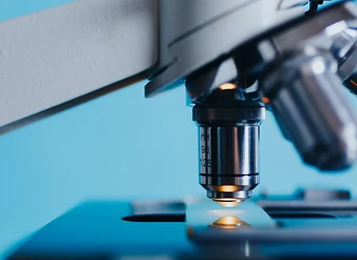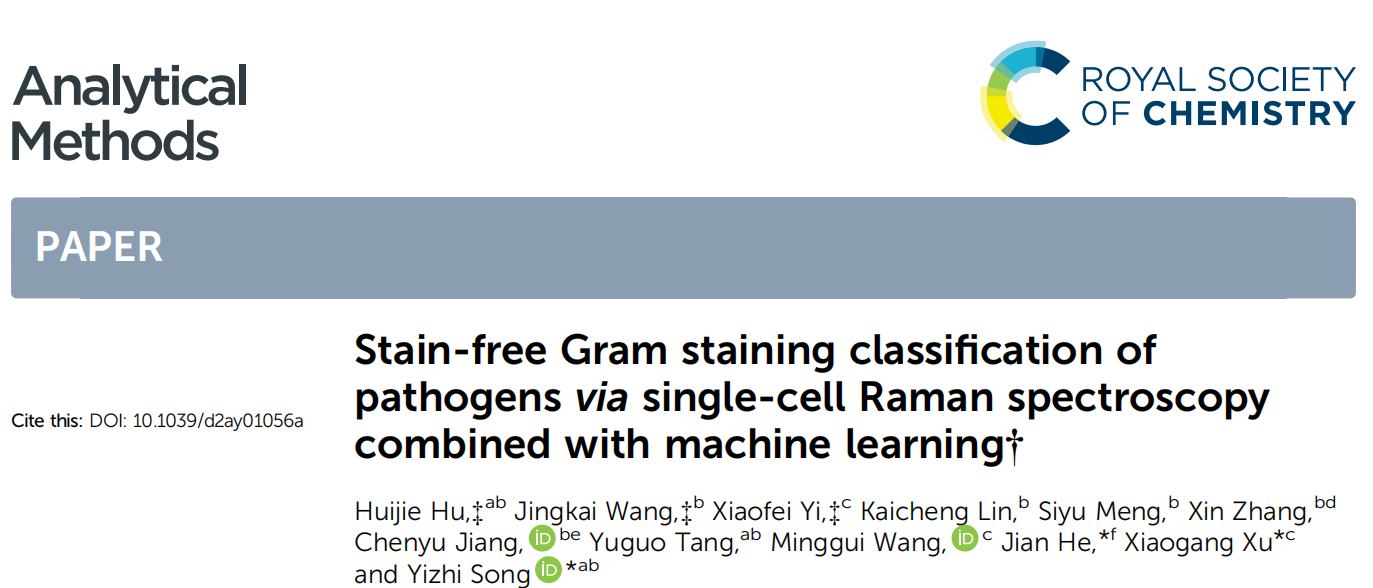

- Application Article
- Download
Hooke College

- About Us
- Team
- R & D and production
- Join Us
- Contact Us
- Qualification honor



On September 16, 2022,Yizhi Song from the Suzhou Institute of Biomedical Engineering Technology, Chinese Academy of Sciences,Xiaogang Xu from the Institute of Antibiotics, Huashan Hospital, Fudan University, and Jian He from the Monocytomics Center of the School of Public Health, School of Medicine, Shanghai Jiao Tong University, applied the HOOKE INSTRUMENTS core product -HOOKE P300 , He published a paper entitled "Stain-free Gram staining classification of pathogens via single-cell Raman spectroscopy combined with machine learning" in Analytical Methods. In this study, confocal Raman spectroscopy and machine learning techniques were integrated to distinguish gram negative (GN) or gram positive (GP) bacteria.

Gram staining (GS) is one of the routine microbiological operations to classify bacteria based on the cell wall structure. Accurate GS classification of pathogens is of great significance since it helps correct administration of antimicrobial treatment. The laborious procedure and low sensitivity results related to conventional GS have resulted in reluctance among clinicians. In this study, we integrate confocal Raman spectroscopy and machine learning techniques to distinguish Gram-negative (GN) or Gram-positive (GP) bacteria. A single-cell Raman database including seven most common clinical pathogens (three GP strains and four GN strains) was constructed. Machine learning algorithms including the support-vector machine (SVM), k-nearest neighbors' algorithm (k-NN), gradient boosting machine (GBM), linear discriminant analysis (LDA), and t-distributed stochastic neighbor embedding (t-SNE) were trained to achieve the binary classification for GS. With such a relatively small database, the SVM model achieved the highest accuracy of 98.1%. The molecular signatures of GN and GP embedded in their Raman fingerprints were identified with hierarchical cluster analysis (HCA). The results indicated that Raman peaks for peptidoglycan and teichoic acid were the most significant factors that contributed to accurate classification. The Raman machine learning approach could greatly enhance the diagnosis of pathogenic infections.
The paper links:
https://pubs.rsc.org/en/content/articlelanding/2022/AY/D2AY01056A

+86-431-81077008
+86-571-86972756

Building 3, Photoelectric Information Industrial Park, No.7691 Ziyou Road, Changchun, Jilin, P.R.C
F2006, 2nd Floor,South Building, No. 368 Liuhe Road, Binjiang District, Hangzhou, Zhejiang,P.R.C

sales@hooke-instruments.com

COPYRIGHT©2022 HOOKE INSTRUMENTS LTD.ALL RIGHTS RESERVED 吉ICP备18001354号-1